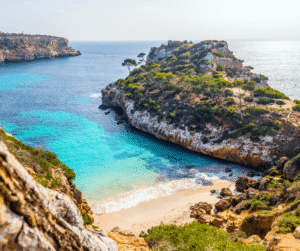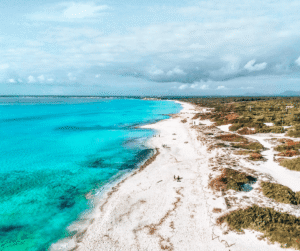Palma de Mallorca, the capital city of Mallorca island and the Balearic Islands, was founded by the Romans in 123 BC and it has been shaped by centuries of conquests, reconquests and frequent pirate attacks. Today, Palma is one of the most popular holiday destinations, a cosmopolitan destination that attracts travellers from all over the world with its golden sand beaches, Mediterranean lifestyle and history and art. if you would like to know more about the island, from castles, little cliff towns or beautiful beaches here is a list of 20 things to visit in Mallorca (the island).
Whether you’re strolling through cobbled streets, admiring Gothic cathedrals, or enjoying tapas in a bustling plaza, Palma offers something for every type of visitor. In this guide, we’ll explore 15 must see attractions in Palma de Mallorca that are frequently recommended in travel guides and beloved by tourists and locals alike.
1. La Seu: Palma Cathedral
Entering the Cathedral of Santa Maria, known as “La Seu” is one of the most unforgettable experiences in Palma de Mallorca. This is the most important religious building in the Balearic Islands.. Built on the edge of Palma Bay beginning in 1229, it dominates the skyline and is visible from across the city. Its Levantine Gothic style and massive scale are truly striking, and it features the largest Gothic rose window in the world (measuring 13 meters in diameter).
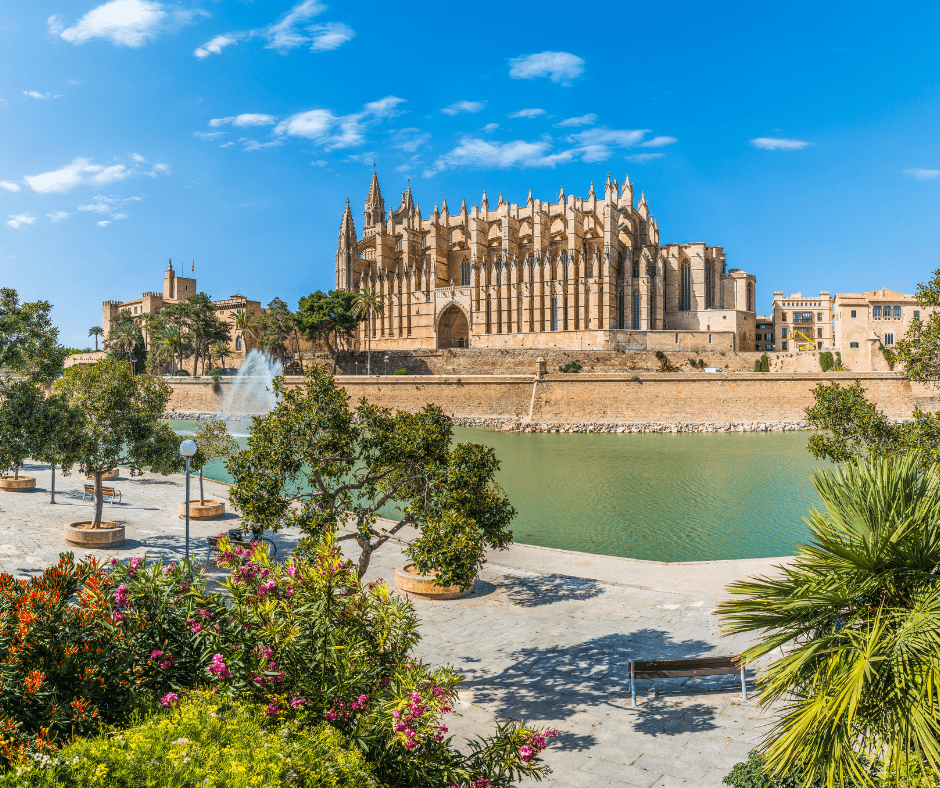
Inside, the structure is known for its vast hall style layout, supported by soaring pillars over 20 meters tall. Its central nave rises to 44 meters, making it one of the tallest Gothic cathedrals in Europe. The cathedral is also known as “The Cathedral of Light” thanks to its 87 windows and 7 rose windows, which flood the interior with vibrant color.
Ticket price: From 10€ adults
Official site and times: https://catedraldemallorca.org/en/visits/tours/
2. Parc de la Mar
Parc de la Mar is a tranquil green space located at the foot of Palma’s medieval walls, just below the iconic La Seu Cathedral. This scenic area was created in the 1970s as part of a major urban renewal project. To preserve the feeling of proximity to the sea, a large saltwater lake was installed to reflect the cathedral’s stunning silhouette and create one of the city’s most photogenic viewpoints.
The park has since become one of Palma’s most emblematic public spaces and a central venue for major cultural events such as the Sant Joan festivities, Fiesta Flexas, Beer Palma, and open air film screenings.

Visitors can relax in the shaded areas, take in the views from one of the nearby café terraces, or walk along the ancient city wall on the Passeig Dalt Murada for panoramic views of the palm lined park and the Mediterranean beyond. Toward the far end of the park, you’ll find grassy areas perfect for lounging and a playground that makes it a favorite stop for families.
3. Palau de l’Almudaina
Standing proudly beside the cathedral, the Palau de l’Almudaina is one of the most striking buildings in Palma de Mallorca. It has retained much of its medieval character and serves today as an official summer residence of the Spanish royal family.
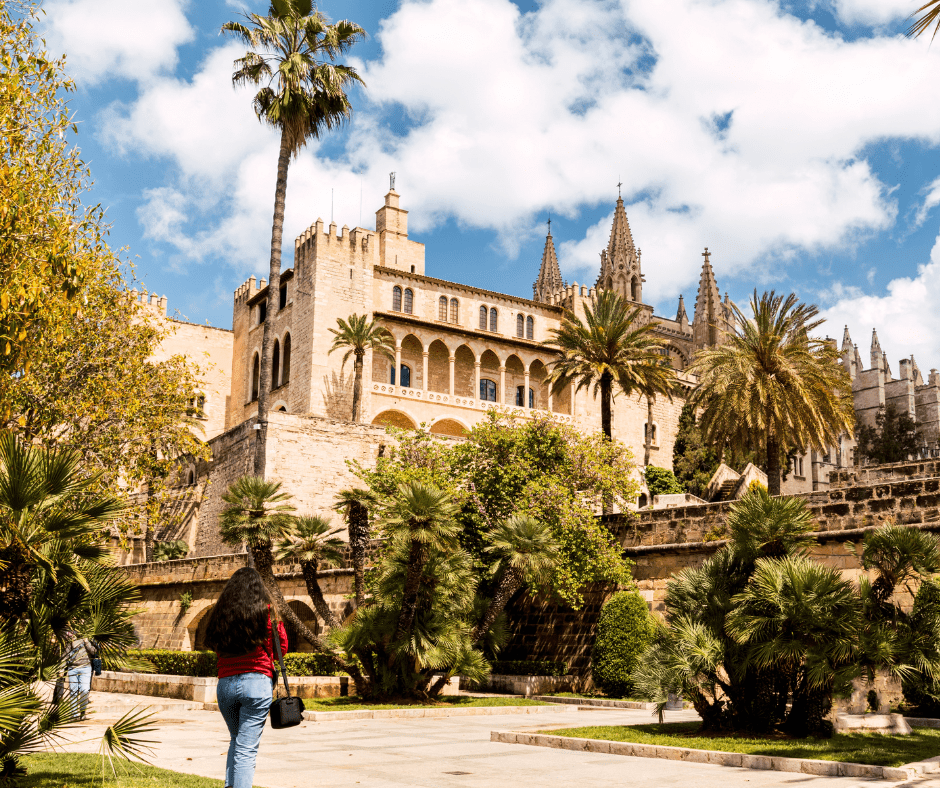
Crossing the fortified walls, you’ll encounter the impressive Torre del Homenaje (Tower of Homage) before arriving at the elegant Patio del Rey (King’s Courtyard), which leads to various royal chambers and common rooms. These spaces are richly decorated with period furniture, historic tapestries, and artworks that transport visitors back in time. One of the highlights of a visit is stepping out onto the palace terrace, which offers stunning views over the Paseo Marítimo and the distant silhouette of Bellver Castle.
Ticket price: From 7€ adults
Official site and times: https://tickets.patrimonionacional.es/en/tickets/palacio-almudaina
Free tickets: May 18th (International Museum Day) and October 12th (National Holiday of Spain). Wednesdays and Sunday from 15:00 to 19:00h. (Winter 18:00h), free admission for citizens of the European Union.
4. S’Hort del Rei
After visiting the Royal Palace of the Almudaina, take a moment to relax in the peaceful S’Hort del Rei, or “King’s Garden.” Located just beneath the palace, this serene oasis was once reserved exclusively for the royal family. In the 14th century, the garden was filled with fruit trees, flowering plants, vegetables, and herbs, creating a lush royal retreat.
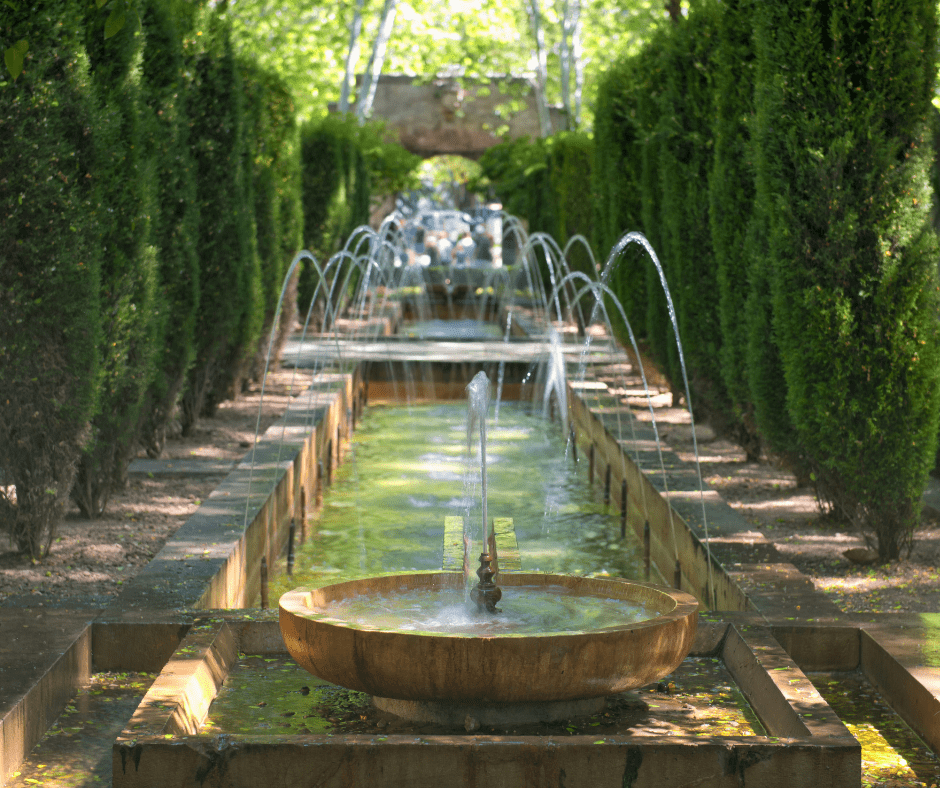
In the 1960s, architect Gabriel Alomar redesigned the area into a public space, drawing inspiration from traditional Andalusian gardens. Today, it features tranquil fountains, rows of cypress trees, shaded benches, and a large reflective pond that invites quiet contemplation.
5. Castell de Bellver
Bellver Castle, whose name translates to “lovely view,” lives up to its name with a commanding position atop a hill just west of Palma. Surrounded by fragrant pine woods and overlooking the Bay of Palma and the Tramuntana mountains, it offers one of the best panoramic views on the island.

Built in the 14th century for King Jaume II of Mallorca, this perfectly preserved circular castle is a rare architectural gem in Spain and a masterpiece of Gothic design. It served variously as a royal residence, a defensive stronghold, and a prison for nearly 600 years. It was used as a prison during World War II and Franco’s dictatorship.
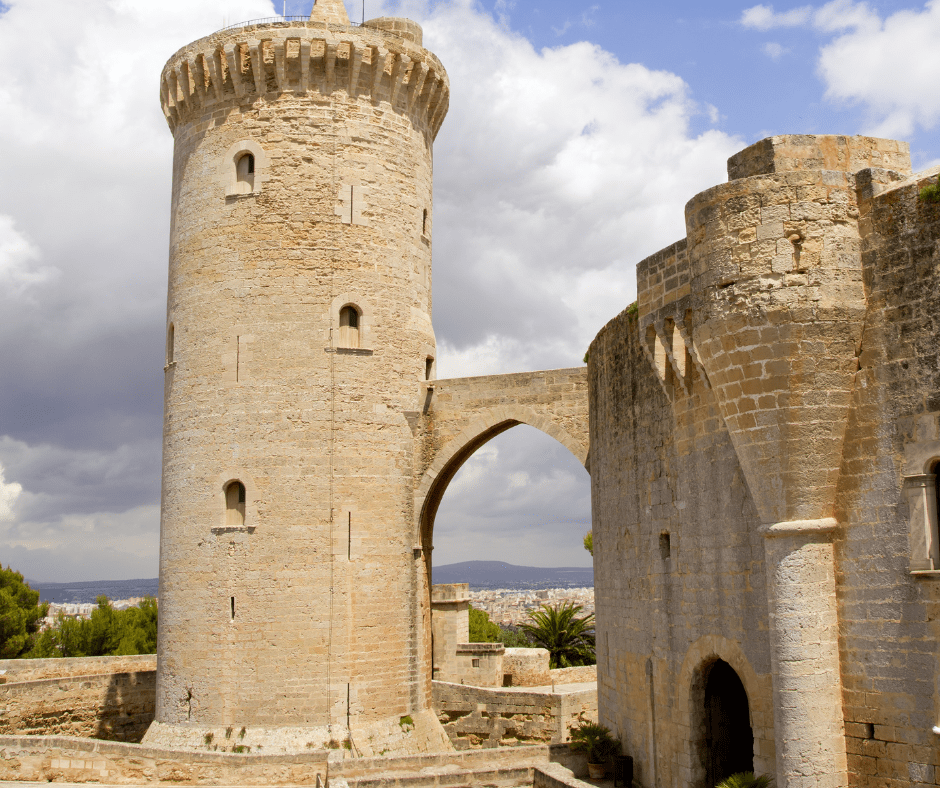
The castle’s unique circular layout features a two tiered central courtyard known as the Patio de Armas. The lower level, with Romanesque arches, was used by servants and soldiers, while the upper Gothic tier was reserved for the royal family. Bellver is complete with a wide moat, a drawbridge, and three defensive towers. Inside, Bellver houses the City History Museum, where visitors can explore eight exhibition rooms filled with Roman, Arab, and Spanish artifacts.
Ticket price: 4€ Adults
Official site and times: https://castelldebellver.palma.es/en/-/opening-hours-and-prices-of-castell-de-bellver-
Free tickets: Sundays
6. Paseo Marítimo
Stretching along the Avenida de Gabriel Roca, the Paseo Marítimo is one of the most scenic and lively waterfront promenades in Palma de Mallorca. It’s a favorite route for walking, jogging, or cycling while enjoying sweeping views of the marina and the sparkling Mediterranean Sea.
You can begin your stroll at the Dársena de Can Barberá, a dock reserved for smaller boats, and continue past the expansive marina filled with luxury yachts and recreational vessels.
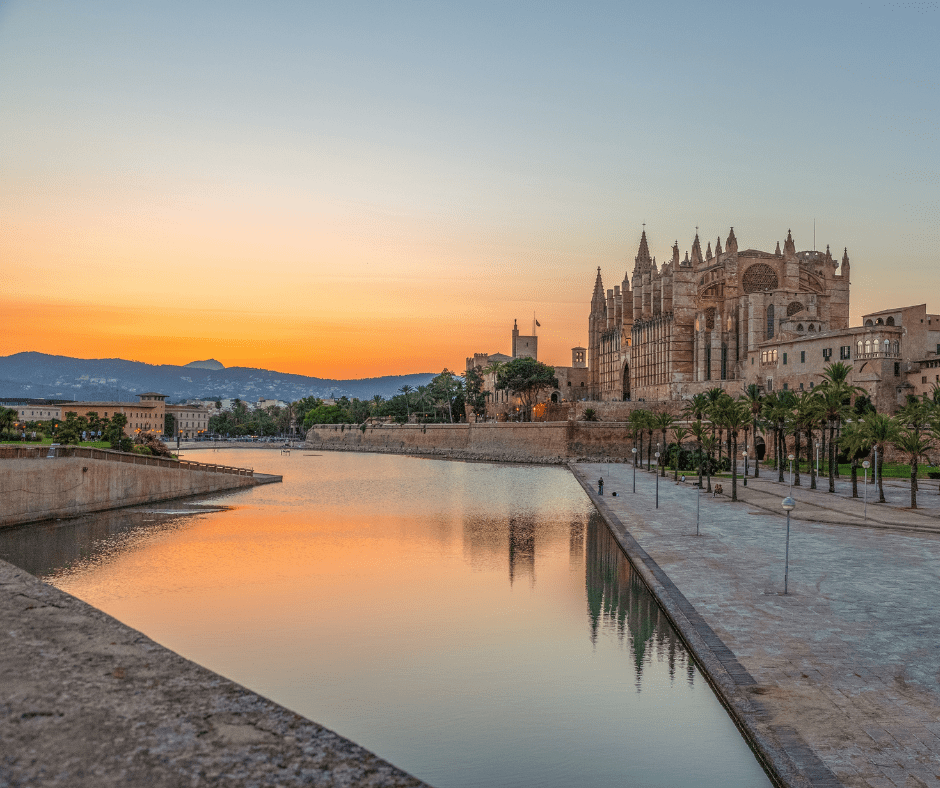
The route extends all the way to the Can Pere Antoni beach, making it not only a scenic path but also a convenient connection between historic sites and sandy shores. Palm trees, sculptures, and shaded benches line the way, offering perfect stops to take in the surroundings. If you would like to spend some time on a beautiful beach, here we have a list with 20 best beaches in Mallorca, from golden soft sand beaches to hidden gem.
As the sun sets, the Paseo Marítimo transforms into a hub of nightlife. Beach clubs like Anima Beach, legendary night spots such as Tito’s, and live music venues like Garito Café keep the promenade buzzing well into the night.
7. La Lonja de Palma
Just a short walk from the Paseo Marítimo lies La Lonja de Palma, one of the finest examples of Gothic architecture in Mallorca. Constructed between 1420 and 1452, this striking building once served as the city’s maritime trade exchange during the height of Palma’s commercial activity in the Middle Ages.
Originally conceived as a meeting place for merchants, the building’s interior is a masterpiece of Gothic design, featuring three expansive naves supported by six soaring, helicoidal columns with no capitals. These elegant columns mirror the style of the Lonja in Valencia and create an open and inspiring space flooded with light.
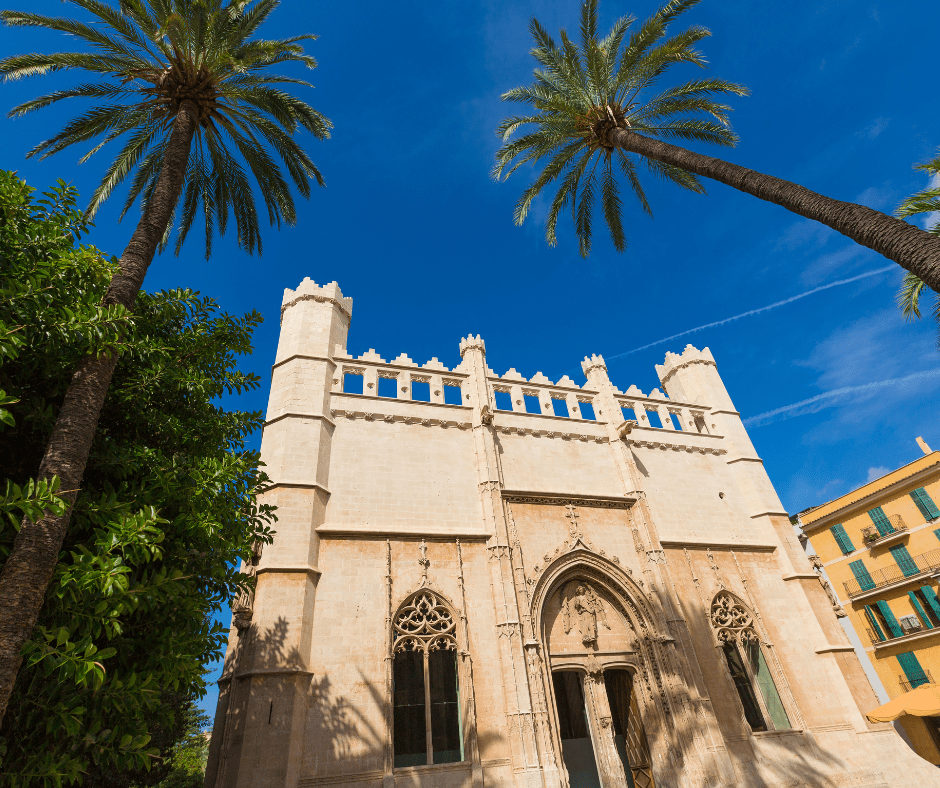
Above the main entrance, you’ll find a sculpture of the Guardian Angel holding a scroll inscribed with “Defenedor de la Mercaderia” (Protector of Merchandise). The building’s graceful symmetry and delicate stonework stand in contrast to its robust function as a commercial hub and symbol of Mallorca’s maritime power. Today, La Lonja is no longer used for trade but opens its doors for art exhibitions and cultural events.
Tickets: Free
8. Banys Àrabs (Arab Baths)
Hidden among the narrow, quiet streets of Palma’s old town, the Banys Àrabs (Arab Baths) are one of the few surviving remnants of the city’s Islamic past. Located within the gardens of a former nobleman’s manor on Can Serra Street, these baths date back to between the 10th and 12th centuries, when Palma was known as Madina Mayurqa under Muslim rule.
The site preserves parts of what was once a full hammam, specifically the caldarium (hot room) and tepidarium (warm room), offering a rare glimpse into everyday life during the Islamic period. The bath chamber is notable for its 12 columns arranged in a circle, supporting a dome with small circular openings for light and ventilation.

Surrounding the bathhouse is a serene garden filled with palms, orange trees, and flowering plants, providing a peaceful escape from the city bustle. Though modest in size, the Arab Baths offer an atmospheric and educational experience.
Tickets: 3.5€ for adults.
9. Plaça Major
The Plaça Major is one of the most emblematic and picturesque squares in Palma de Mallorca. It’s a lively, welcoming plaza that draws comparisons to Madrid’s famous square with its porticoed facades, uniform architecture, and charming green shuttered windows.
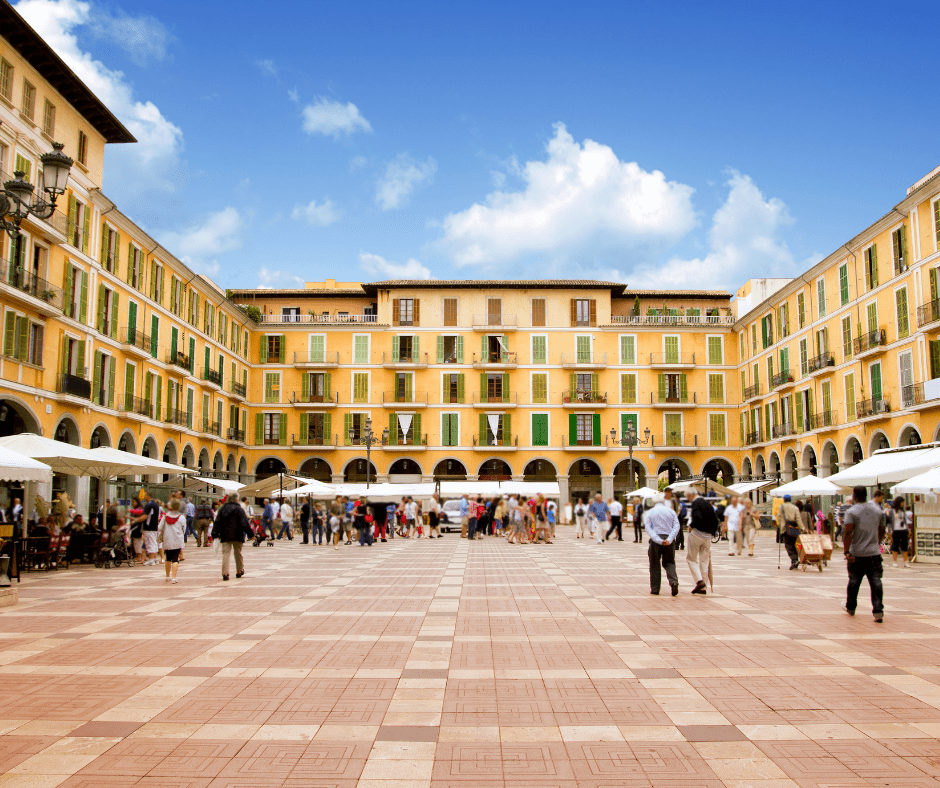
The square is a favorite gathering place for locals and visitors alike. Street performers, outdoor cafés, and small artisan markets create a vibrant and inviting atmosphere perfect for relaxing and looking around.
10. Carrer de Sant Miquel
From Plaça Major, you can easily access Carrer de Sant Miquel, one of Palma’s main shopping streets. Filled with boutiques, well known brands, and traditional bakeries like the popular Forn de Santo Cristo, famous for its ensaimadas (one of Mallorca’s most beloved pastries). Along the way, you’ll also pass notable landmarks such as the Basilica of Sant Miquel, the Convent of Sant Antoni, and Mercat de l’Olivar, Palma’s largest indoor market and a great stop for fresh produce and local flavors.
Midway along the street stands the Basilica of Sant Miquel, believed to be the site of the first mass celebrated in Palma following the Christian conquest of 1229. The church features a 15th century sculpture of the Mare de Déu de la Salut and the Christ Child, which is the focus of a local festival each September.
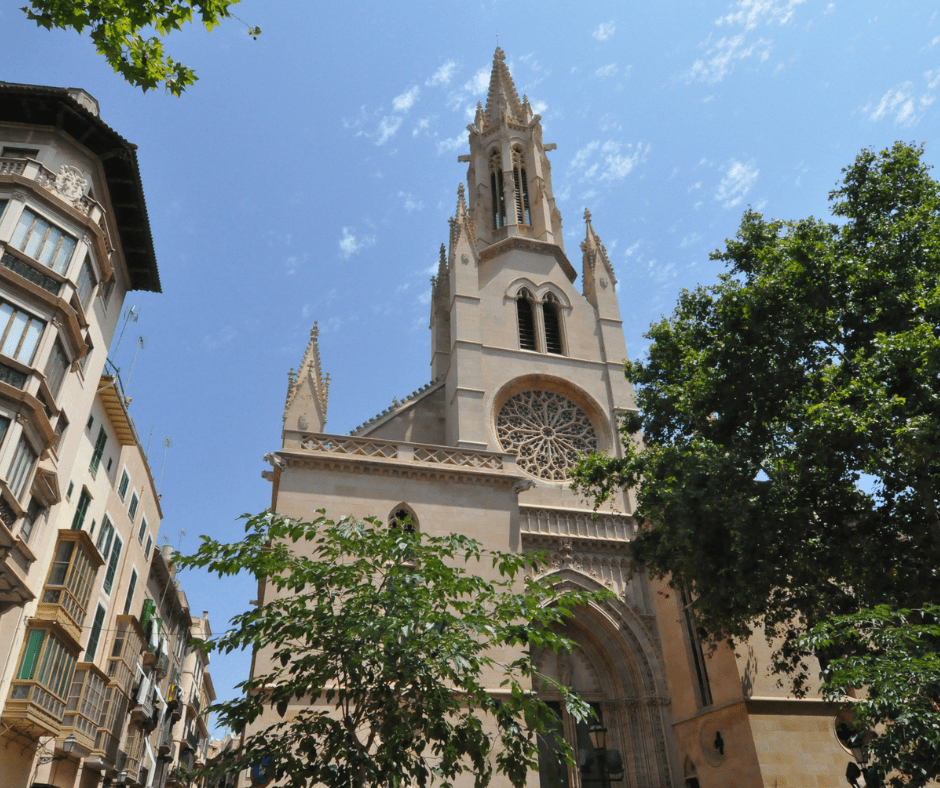
Just a short stroll away is the Mercat de l’Olivar, Palma’s largest covered market and a top destination for food lovers.
11. Mercat de l’Olivar
Located in the heart of Palma, just a short walk from Plaza España and Plaça Major, Mercat de l’Olivar is the city’s most iconic and vibrant fresh food market.
Inside, the market is organized into colorful sections brimming with fresh fruits and vegetables, meats, poultry, cheeses, cured meats, and an impressive fish and seafood area that’s among the best on the island. You’ll find many local specialties here, such as sobrassada, a Mallorcan cured sausage flavored with paprika, as well as artisanal cheeses, olives, pastries, and regional wines. There’s also a selection of gourmet coffee stands and delicatessens for those looking for high quality goods.
But Mercat de l’Olivar is more than just a shopping destination. It is a social and gastronomic experience. Several small restaurants and tapas bars inside the market serve fresh, seasonal and local dishes. From sushi and oysters with champagne to traditional Spanish tapas, there’s something for every taste.
12. Museu Es Baluard
The Es Baluard Museu d’Art Contemporani de Palma is housed within the historic bastion of Sant Pere, a 16th century Renaissance fortification that once formed part of the city’s defensive walls. This fusion of ancient architecture and modern design makes the museum a unique and striking space to explore.
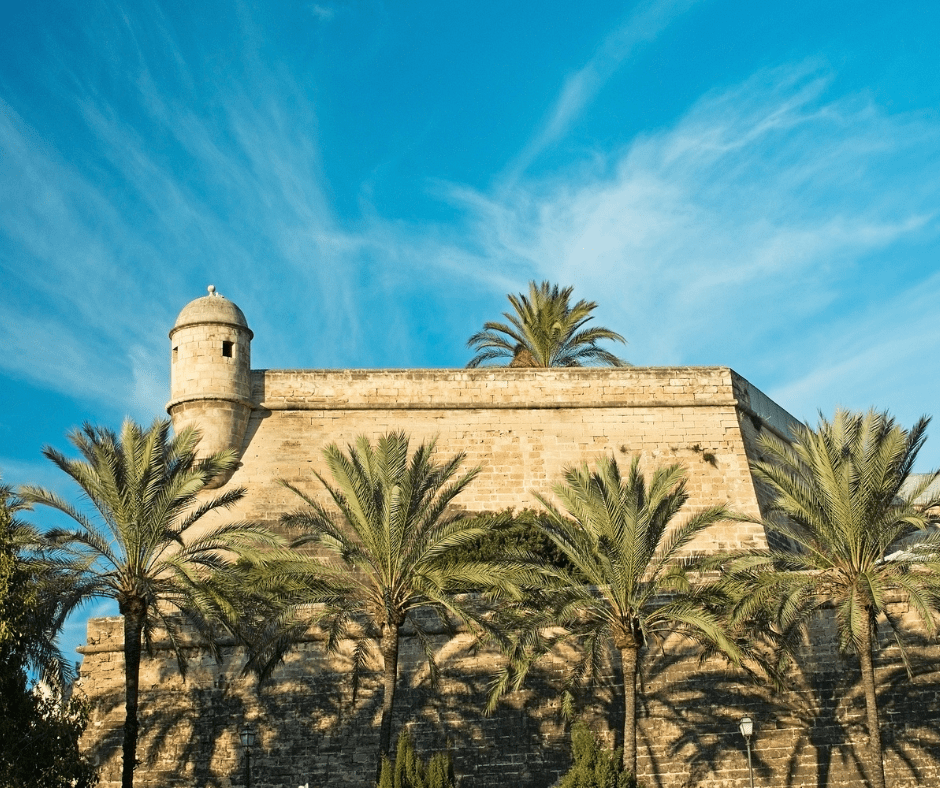
Since its opening in 2004, Es Baluard has become a dynamic platform for contemporary artistic creation. The museum features works by Joan Miró, Picasso, and Barceló, as well as rotating exhibitions by both Spanish and international artists. The collection offers diverse perspectives that connect Mallorca’s artistic heritage with global creative movements.
Don’t miss the museum’s panoramic terrace café, which offers one of the best views in Palma, looking out over the bay and the city’s skyline. Whether you’re an art lover or simply curious, Es Baluard offers a thoughtful, enriching experience within a stunning historic setting.
Ticket price: 6€ Adults
Official site and times: https://www.esbaluard.org/en/visit/#rates
Free tickets: January 30 to February 2 Anniversary of the Museum, March 1st Balearic Islands Day, May 18th International Museum Day, June 29th San Pedro and December 6th Constitution Day.
13. Fundació Pilar i Joan Miró
For those passionate about modern art, the Fundació Pilar i Joan Miró offers a rare and intimate insight into the life and creative process of one of Spain’s most celebrated artists. Although Joan Miró spent much of his life in Barcelona, he had deep ties to Mallorca through his mother and wife, both of whom were Mallorcan. Drawn by the island’s unique light and landscape, he chose to settle in Palma permanently in 1956, at the age of 63.
The foundation is located in Cala Major, in the home and studio where Miró lived and worked until his death in 1983. Visitors can tour his preserved studio, which remains just as he left it, with unfinished canvases, paint splattered floors, and open paint cans offering a vivid glimpse into the artist’s world.
The museum holds a significant collection that includes over 100 paintings, 25 sculptures, and thousands of sketches, models, and personal artifacts. While not all works are on display at once, the rotating exhibitions ensure that each visit is unique. Miró’s art is known for its playful, almost childlike forms, filled with bold primary colors and inspired by local traditions, nature, and objects like siurells, Mallorca’s traditional clay whistles.
Ticket price: 10€ Adults
Official site and times: https://miromallorca.com/en/visitans/
Free tickets: Saturdays from 3 p.m. First Sunday of every month: 10 a.m to 3 p.m. Open days: March 1st (Day of the Balearic Islands), May 18th (International Museum Day), June 24th (Saint John’s Day) and December 19th (Fundació anniversary). If any of these dates falls on a Monday, the museum will remain closed. Free admission ends 45 minutes before closing.
14. Basílica de Sant Francesc
Tucked away in Palma’s old town, the Basílica de Sant Francesc is a 13th century church that offers both spiritual significance and architectural beauty. Its austere Mallorcan sandstone façade (it was rebuilt in the 17th century after a lightning strike) features a large rose window and a delicately carved portal that contrasts with its otherwise imposing exterior.

Entry to the church leads visitors through peaceful Gothic cloisters, centered around a garden with orange and lemon trees and a stone well. These tranquil surroundings are a highlight in themselves and offer a moment of calm before entering the richly decorated interior.
15. Portixol
Once a quiet fishing village, Portixol has evolved into one of Palma’s trendiest and most desirable neighborhoods. Portixol is known for its lively boardwalk, where cyclists, joggers, and dog walkers share the space with beachgoers and café dwellers. Its colorful houses, small coves, and relaxed vibe provide the perfect contrast to the bustle of central Palma.
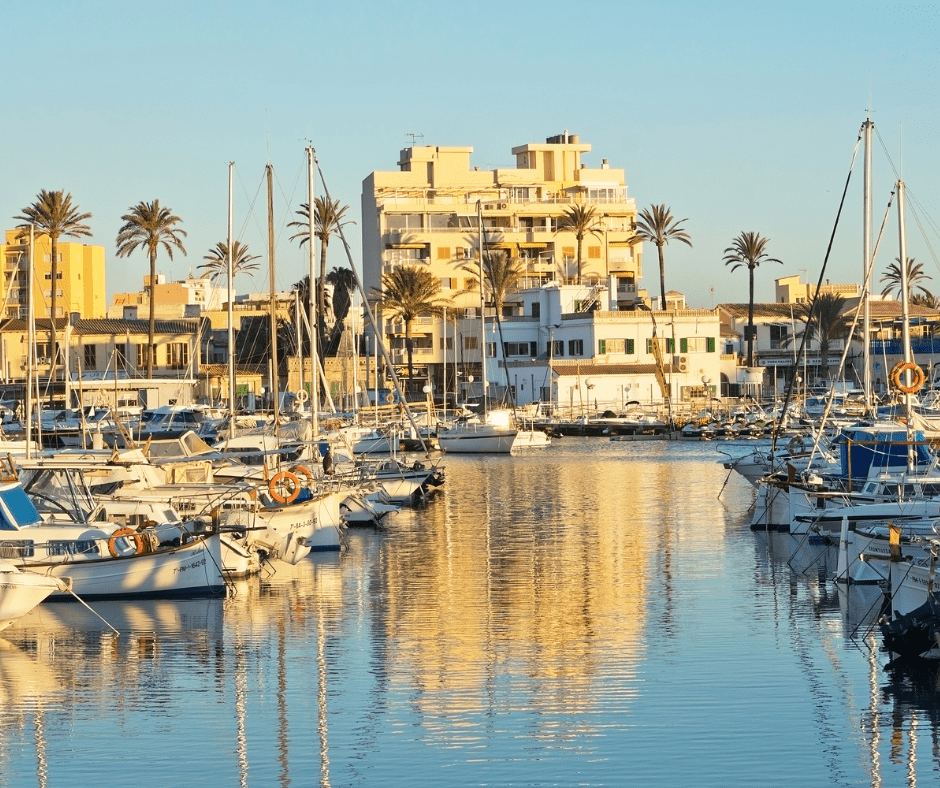
The area boasts an array of beachfront restaurants and bars, ranging from upscale seafood spots to bohemian hangouts, all with unbeatable views of the Mediterranean. With its prime location near the city center and airport, Portixol offers the best of both worlds.
Whether you’re stopping for a drink, enjoying a seafront meal, or taking in the breeze on a sunset walk, Portixol is a perfect place to experience the casual and easy lifestyle that makes Mallorca so special.
After exploring the city of Palma you might want to relax in one of the many bars or restaurants by the seafront. Here we have a list with the best bars and beach clubs in Mallorca, some of the right in the city of Palma.
Palma de Mallorca is much more than just a beach destination. It’s a city steeped in history, rich in culture, and bursting with Mediterranean beauty. Whether you’re exploring ancient fortresses, enjoying vibrant markets, or simply relaxing by the sea, Palma offers unforgettable experiences at every turn.




